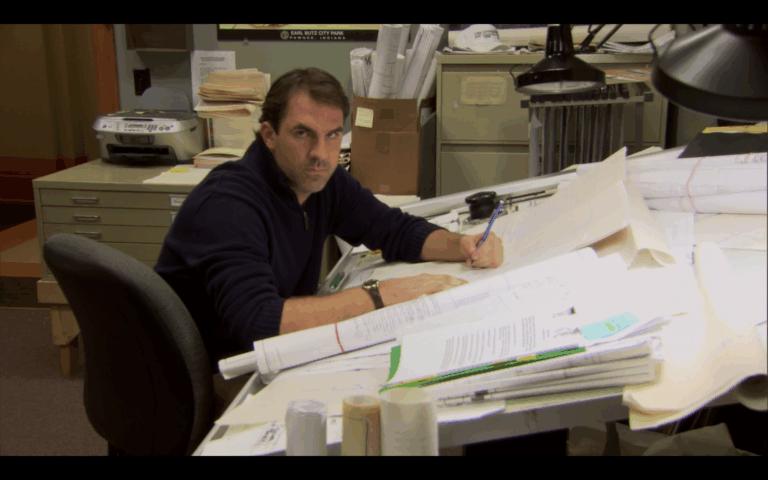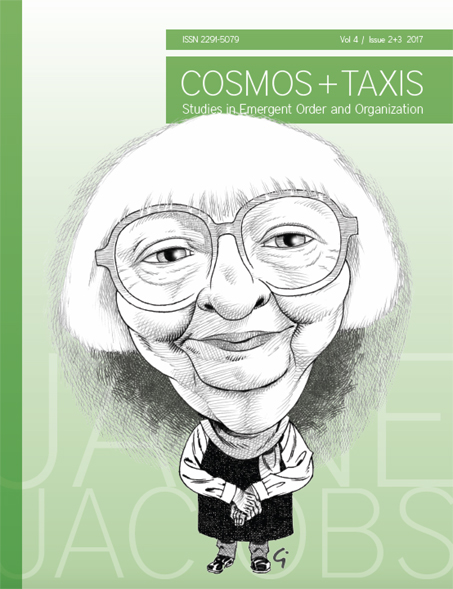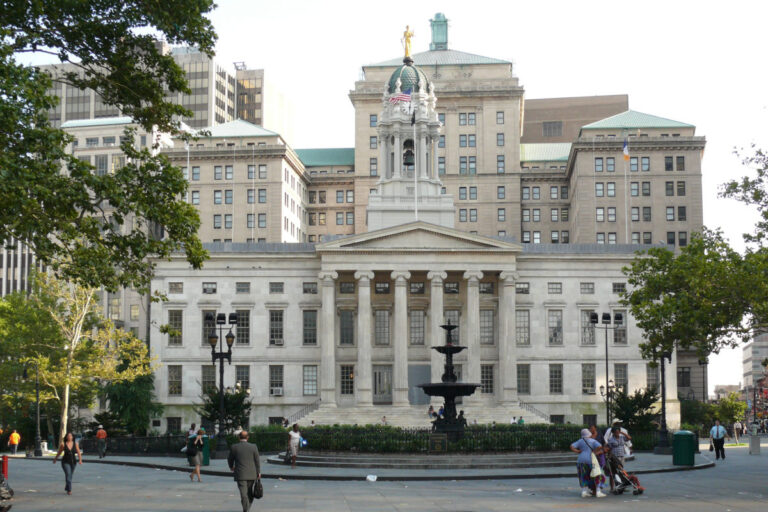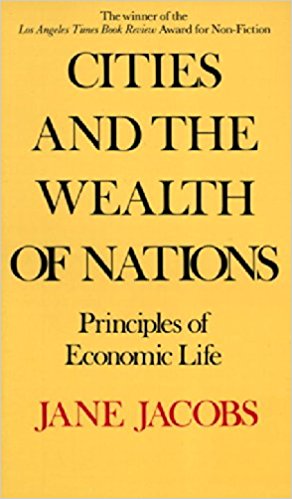Physical Address
304 North Cardinal St.
Dorchester Center, MA 02124
Physical Address
304 North Cardinal St.
Dorchester Center, MA 02124
As Jacobs explains in her book The Death and Life of Great American Cities: Artists, whatever their medium, make selections from the abounding materials of life, and organize these selections into works that are under the control of the artist…the essence of the process is disciplined, highly discriminatory selectivity from life. In relation to the inclusiveness and the literally endless intricacy of life, art is arbitrary, symbolic and abstracted…To approach a city, or even a city neighborhood, as if it were a larger architectural problem, capable of being given order by converting it into a disciplined work of art, is to make the mistake of attempting to substitute art for life. The results of such profound confusion between art and life are neither art nor life. They are taxidermy.” (1961: 372-3, emphasis original) So how do we avoid turning the results of urban design into taxidermy and killing off a city by planning? I think the short answer is that we avoid it by recognizing that there’s a tradeoff between the scale of a design and the degree of spontaneity, complexity, and intricacy in the resulting social order that the design allows. Now, saying that a city cannot be a work of art doesn’t mean of course that a city cannot be beautiful or that deliberate design can never enhance that beauty. But I am suggesting that beauty that is designed as a work of art is fundamentally different from the undersigned beauty that emerges from a lifetime of experience. The skillfully made-up face of a fashion model and the face of a 90-year-old grandmother are both beautiful, but in profoundly different ways. Niels Gron, quoted in Gerard Koeppel’s City of a Grid: How New York Became New York: Before I came to this country, and in all the time […]
One of the popular sports broadcasts I used to watch as a kid promised interviews with athletes that would bring them to you “up close and personal.” As I was once waiting in line to order coffee at one of my favorite local coffeehouses there were several people ahead of me. I followed the “barista” taking orders, with his dark-framed glasses, reddish beard, and slightly hurried manner. From a distance, in those few minutes I formed an expectation about his personality: Blasé and probably a bit curt; someone who really doesn’t want to be here. But when I came face-to-face with him and placed my order, I could feel his liveliness, warmth, and friendliness. My expectations needed revising. It’s the same with cities. From a distance, from an airplane or a photograph, we notice macro features and sweeping patterns that might form our first impressions. Noticing the layout of streets or the pattern of buildings from the air we might say something like “Oh, what an impressive skyline!” or “This place is a dump!” For instance, New York, London, Paris have distinct skylines. Approaching these cities from the air is thrilling as we spot the Empire State Building dominating Midtown Manhattan, Big Ben and Parliament along the Thames, or the Eiffel Tower standing counterpoint to la Defense. Tokyo’s on the other hand is a different story, but that difference is informative. Tokyo’s skyline is, at least to me, terribly underwhelming. Heavily bombed and burned during World War II and subject to devastating earthquakes throughout its history, Tokyo has few tall buildings compared to other major cities. Even as you drive in closer along the highway from Narita Airport the architecture for the most part remains boxy and drab. When you actually enter the central city, with the Sumida River winding […]
[In this space I’ll be posting quotes, ideas, and excerpts relating to a book I’m writing (thus far untitled), which I might describe as “What I have learned from the economic and social theory of Jane Jacobs.” My hope is to get thoughtful, informed feedback that will be useful in shaping the book.] Architects and planners refer to something called the “built environment” by which they usually mean things such as city streets and pathways and the grids made up by them, buildings of various kinds, plazas, the infrastructure of water and energy inflow and outflow, parks and recreation areas, unbuilt open spaces. Although parts of each of these urban elements were consciously constructed, usually by a team of individuals, the way that they fit together, except in the case of mega- and giga-projects, are not the result of a deliberate plan. Buildings in a particular location, for example, – offices, schools, residences, retail, malls, entertainment, places of worship, research facilities – are of different vintages, constructed by different people for different purposes at different times with different techniques, historical contexts, and sensibilities. But the way they all more-or-less complement one another, their “fit,” is an emergent, unplanned phenomenon. I will refer to these elements collectively as the “built framework,” where the word “built” should not in all cases imply deliberate design. What goes on within the built framework can also be planned or unplanned There are, of course, the activities for which a particular element is intended (most recently, that is, because spaces can have multiple uses over time). A gas station, what we might call a “specialized space,” is primarily for pumping gas, not for seeing a football game, which you do at a stadium. But there are other activities that take place in or are facilitated by a given element, […]

The starting point for Jacobs’s analysis and the focus of much of her thought is the city, its nature and significance. There are plenty of books out there that in some way celebrate cities. Many describe cities as engines of economic development, wellsprings of art and culture, and incubators of ideas religious, social, and scientific. But few go very far in explaining why and how all that usually happens in a city. Fewer still view the urban processes as expressions of “emergence,” or what some social theorists describe using the related term “spontaneous order.” That is the perspective of this book and its main contribution: To look closely at what makes a city a spontaneous order and an engine of innovation, and to trace the analytical and policy consequences of viewing it this way. Jane Jacobs is one of those exceptions, indeed an outstanding one. In fact, she is probably the first to carefully examine, not only the nature and significance of cities, but to distill realistic principles that govern urban systems and to analyze the mechanisms of economic change that follow from those principles. Her analysis of the relation between the design of public space and social interaction offer insights that complement, and often exceed, those of Max Weber, Henri Pirenne, Georg Simmel (pdf), Kevin Lynch, and others. Her work also has deep connections with modern social theorists such as F.A. Hayek, Elinor Ostrom, Mark Granovetter, and Geoffrey West. But she was not the first to develop conceptual tools congenial to understanding urban processes as emergent, spontaneous orders. In fact they have largely been available for decades in the field of economics, although few professional economists, including urban economists, have fully appreciated the urban origins of many of their standard concepts and tools of analysis. Indeed, there is a […]
Welcome to the first post in Culture of Congestion! I’ll be posting quotes, ideas, and short essays relating to a book I’m writing, which I might describe as “What I have learned from the economic and social theory of Jane Jacobs.” My hope is to get thoughtful, informed feedback that will be useful in shaping the book. – Sandy Ikeda When I asked Jane Jacobs what she believed her main intellectual contribution was, she answered without hesitation, “Economic theory!” It’s been my experience that most of those who admire Jacobs for her trenchant writings and fierce activism against heavy handed urban planning and top-down urban design find it surprising that she thought of herself at heart as an economist. But a glance at the titles of her books makes this rather obvious: The Economy of Cities, Cities and the Wealth of Nations, and The Nature of Economies. And in her most famous book, The Death and Life of Great American Cities, she explains in intricate detail a la modern social theory what social institutions and norms enable people to discover and pursue their plans at street level, and how doing so allows the city in which they are embedded to flourish in unpredictable ways. She understood how creative innovation – in commerce, science and technology, and culture – is central to that flourishing. She explained, in a way that rivals or surpasses most economic theorists, how and under what conditions innovation takes place and how that tends to undermine attempts at central planning at the local level. One of my motivations for writing this book is to make Jane Jacobs, economist, better known especially to those who already rightly admire her for the other contributions she has made as a public intellectual, and to trace her criticisms of urban planning and design and of various public […]
If you happen to visit Egypt and find yourself in the famous Tahrir Square, you might be puzzled: how could this space accommodate two million protesters? In fact, the square looked different at the time of the Arab Spring, up until the new military government ringed its central part with an iron fence. A similar transformation happened with the Pearl roundabout in the capital of Bahrain where demonstrators used to gather — it was turned into a traffic junction. In my hometown, Moscow, the square where millions called for the end of Soviet rule in 1991 now houses an hideous shopping mall. For a pro-liberty movement to raise its head, Twitter is not enough: face-to-face contact is crucial. That is why when oppressive governments want to destroy civil society, they destroy public spaces. Street markets, green squares and lively parks (think of the iconic Hyde Park corner) are places where citizens meet, negotiate and slowly learn to trust each other. Joseph Stalin knew it well, hence he made sure that city dwellers had no public spaces to socialise in. The results were devastating: chronic mistrust that post-communist societies are yet to overcome. Today, 30 years after the fall of the Berlin Wall, the levels of social capital in Dresden and Leipzig are still lower than in Munich and Hamburg, which bears its economic as well as political costs. One study shows that residents living in walkable neighbourhoods exhibit at least 80% greater levels of social capital than those living in car-dependent ones. That is something to consider, given that only a half of Brits know their neighbour’s name. The economic benefits are also clear: improved walking infrastructure can increase retail sales by 30%. London has witnessed it on Oxford Street where the creation of a Tokyo-style pedestrian crossing led to a 25% increase in turnover in the adjacent stores. In the […]

Spoiler Warning: This post contains minor spoilers about Season Two of Parks and Recreation, which aired nearly 10 years ago. Why have you still not watched it? Lately I have been rewatching Parks and Recreation, motivated in part by the shocking discovery that my girlfriend never made it past the first season. The show is perhaps the most sympathetic cultural representation of local public sector work ever produced in the United States. The show manages to balance an awareness of popular discontent with “government” in the abstract— explored through a myriad of ridiculous situations—with the more mild reality that most local government employees are well-meaning, normal, mostly harmless people who care about their communities. This makes the character of Mark Brendanawicz, Pawnee’s jaded planner, all the more interesting. It’s conspicuous that even in a show so sympathetic to local government, the city planner remains a cynical, somewhat unlikable character. Unlike Ron Swanson, Brendanawicz at one point meant well and has no ideological issues with government; he regularly suggests that he was once a true believer in his work, if only for “two months.” Yet unlike Leslie Knope, he didn’t choose government. In his efforts to win back Anne, Andy chides Brendanawicz as a “failed architect,” an insult which seems to stick. Brendanawicz ultimately leaves the show as an unredeemed loser: after taming his apparent self-absorption and promiscuity, he prepares to propose to Anne, only to have her preemptively break up with him. When the government shutdown occurs at the end of Season Two, Brendanawicz takes a buyout offer, and resolves to go into private-sector construction. Leslie, who had once adored him, dubs him “Brendanaquits,” and we never hear from Pawnee’s city planner again. It isn’t hard to see why Brendanawicz was unceremoniously scrapped: he was ultimately a call-back to the harsher world […]

Jane Jacobs’ writings span several disciplines—including ethics and most especially economics—but she is best known for her contributions to and her critique of urban planning, design, and policy. Many of those whom she influenced in academia, policy, and activism took the occasion of her one-hundredth birthday in 2016 to celebrate those contributions through lectures, biographies, and various events and publications. The current issue of COSMOS + TAXIS is offered in that same spirit. I am especially pleased that it includes the contributions of a diversity of scholars—with backgrounds in economics, urban policy, urban planning, geography, architectural history, and engineering—with a diversity of insights expressed from the perspectives of epistemology, intellectual history, spatial analysis, urban history, private cities, mercantilism, and of course spontaneous order; and ranging in approach from the theoretical to the historical to the applied. Indeed, we learn from Jacobs that from the diversity of the living city springs experiment, creativity, and surprise; and that pertains equally to the realm of living ideas. Read these pages and be surprised! Articles Special Issue on Jane Jacobs [pdf] Sanford Ikeda Jane Jacobs as Spontaneous Economic Order Methodologist: Part 1: Intellectual Apprenticeship [pdf] Pierre Desrochers and Joanna Szurmak Jane Jacobs as Spontaneous Economic Order Methodologist: Part 2: Metaphors and Methods [pdf] Joanna Szurmak and Pierre Desrochers Experimenting in Urban Self-organization: Framework-rules and emerging orders in Oosterwold [pdf] Stefano Cozzolino, Edwin Buitelaar, Stefano Moroni, and Niels Sorel Modern Cities as Spontaneous Orders [pdf] Wendell Cox and Peter Gordon NIMBYs as Mercantilists [pdf] Emily Hamilton A City Cannot be a Work of Art [pdf] Sanford Ikeda The State of Indian Cities [pdf] Shruti Rajagopalan The Kind of Problem Gentrification Is: The Case of New York [pdf] Francis Morrone Reviews The Accidental City: Improvising New Orleans by Lawrence N. Powell[pdf] Leslie Marsh

Sandy Ikeda has led a Brooklyn Heights Jane’s Walk every year since 2011 in celebration of Jane Jacobs’ 101st birthday. Meet at the steps of Borough Hall (facing the Plaza and fountain) Sunday May 7th at 12:15. When you think of a city you like, what comes to mind? Can a city be a work of art? How do parked cars serve pedestrians? Most of the interaction among people, bikes, and cars is unplanned. How does that happen? Why do people gather in some places and avoid others? Is it possible to create a neighborhood from the ground up? What is a “public space”? How can the design of public space promote or retard social interaction? The beautiful and historic neighborhood of Brooklyn Heights offers excellent examples of Jane Jacobs’s principles of urban diversity in action. Beginning at the steps of Brooklyn¹s Borough Hall, we will stroll through residential and commercial streets while observing and talking about how the physical environment influences social activity and even economic and cultural development, both for good and for ill. We will be stopping at several points of interest, including the famous Promenade, and end near the #2/3 subway and a nice coffeehouse. To Find a Jane’s Walk near you, visit http://janeswalk.org/

No one writer of the last 60 years has influenced urban planning and thinking as much as Jane Jacobs. It seems like just about everyone who has ever set foot in a major city has read The Death and Life of Great American Cities and most professional urban planners have embraced at least part of her ideas. But that was not the only book she wrote and the others deserve attention from urbanists. First published in 1984, Cities and the Wealth of Nations was her last book to focus on cities and her second concerned with economics. Conceived at the height of 1970s stagflation, Jacobs brought her considerable polemical skills to bear on macroeconomics and elaborated on the observations in The Economy of Cities. In that book she theorized that economic expansion in cities was driven by trade, innovation and imitation in a process she called “import replacement”. In this one she extended the idea, arguing that cities and not nation-states are the real basic units of macroeconomic life. She also examined how the economic expansion affected regions in differing geographic proximity and how import-replacement and the wealth generated by it can be used in ways that ultimately undermine the abilities of cities to create wealth, which she called transactions of decline. Import-replacement is one of Jacobs’ more controversial ideas, partially because it seems similar to a discredited development policy called import substitution and partially because her evidence is largely anecdotal, as Alon Levy wrote back in 2007. Nevertheless it’s the centerpiece of Jacobs’ economic theories. And dismissing her work based on a lack of conventional credentials ignores her entire rise to fame and influence. Two important things distinguish import-replacement from import-substitution. Substitution is a national policy pursued by governments with taxes, tariffs and subsidies while replacement is a process […]